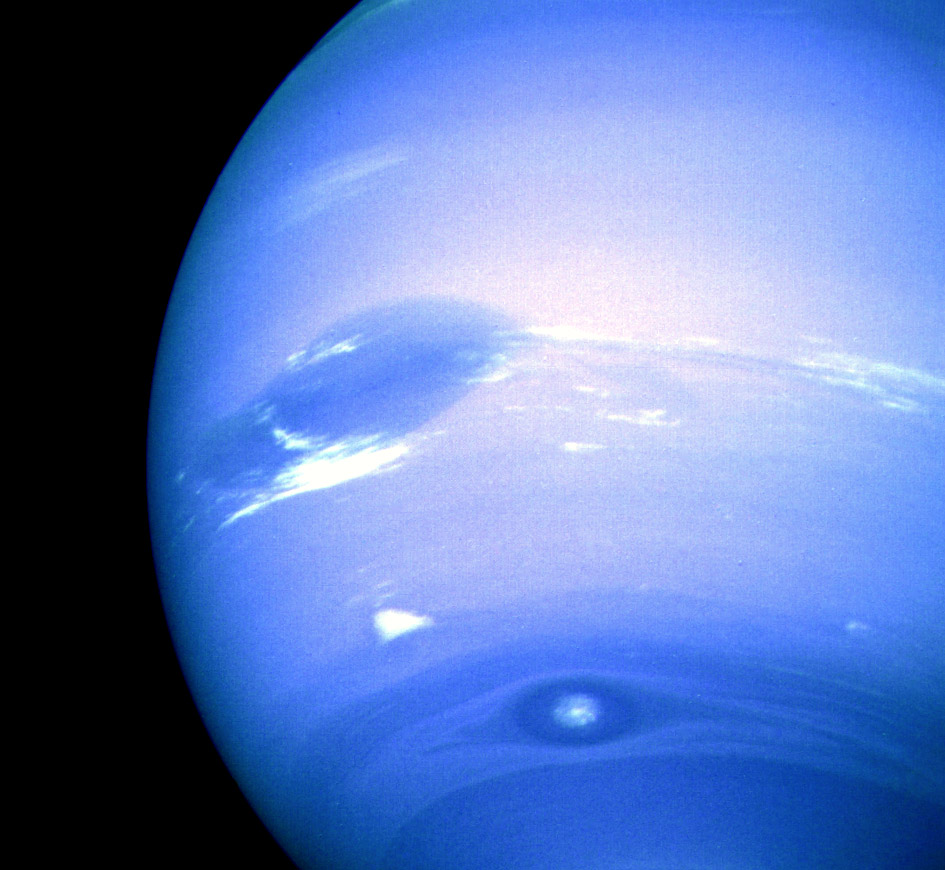5 Incredible Planet Neptune Facts
Let’s explore these 5 incredible planet Neptune facts! Neptune, the eighth and farthest known planet from the Sun in our solar system, has always been shrouded in a cloak of mystery and intrigue. It is a world where conditions defy imagination, with chilling winds and deep blue hues. This essay explores five incredible, little-known, and somewhat creepy facts about Neptune that highlight its eerie and fascinating nature.
Our solar system is made up of 8 planets, including: Mercury, Venus, Earth, Mars, Jupiter, Saturn, Uranus, and Neptune. There are five officially recognized dwarf planets in our solar system: Ceres, Pluto, Haumea, Makemake, and Eris.
1. The Wild Winds of Neptune
Neptune boasts the fastest winds in the solar system. These winds can exceed speeds of up to 1,200 miles per hour (almost supersonic speeds). The energy source for these extreme weather conditions remains a mystery, as Neptune receives only a fraction of the sunlight that reaches Earth. This creates an eerie image: a dark, distant planet with wild, unstoppable winds swirling across its surface, making Neptune one of the most dynamically turbulent planets we know of.

2. The Great Dark Spot
Much like Jupiter’s Great Red Spot, Neptune also features a similar atmospheric phenomenon known as the Great Dark Spot. However, what makes this feature eerie is its transient nature. The Great Dark Spot, a massive storm system, was discovered by the Voyager 2 spacecraft in 1989 but had disappeared when Hubble looked for it just a few years later. This ability for massive storms to appear and vanish on Neptune adds a layer of unpredictability and eeriness to the planet’s global dynamics.

3. The Frozen Methane Mystery
Neptune’s striking blue color is primarily due to the absorption of red light by methane in the atmosphere. What’s creepy is not just the chilling deep blue hue but the extreme cold—temperatures dip down to -214 degrees Celsius (-353 degrees Fahrenheit), which can freeze methane, a compound that on Earth is used extensively as a natural gas. The thought of methane ice crystals possibly snowing sideways in the ferocious winds adds an otherworldly, chilling feel to Neptune’s already mysterious atmosphere.
4. The Captured Moon: Triton
One of Neptune’s moons, Triton, is particularly fascinating and eerie due to its retrograde orbit, meaning it orbits in the opposite direction of Neptune’s rotation. This is unusual for a natural satellite and suggests that Triton was not originally part of the Neptune system but was captured by the planet’s gravity. Triton is geologically active, with geysers believed to spew nitrogen ice. It is slowly spiraling inward towards Neptune and is expected to eventually break apart or crash into the planet—a grim fate for such a unique celestial body.
5. Neptune’s Sound of Silence
Despite the visual and atmospheric drama, Neptune would be eerily silent to human ears. The thin atmosphere makes it incapable of carrying sound waves effectively. Imagine standing on this distant world, witnessing intense storms and supersonic winds, yet hearing nothing but silence. This stark contrast between the visual chaos and the auditory void would be a surreal experience, making Neptune’s environment not only alien but profoundly isolating.

Planet Neptune Facts: Summary
Neptune, with its extreme winds, fleeting dark spots, frozen methane, mysterious captured moon, and haunting silence, paints a picture of a planet that is both fascinating and slightly terrifying. These features remind us of the vastness and mystery of our solar system, where conditions can be dramatically different from our home planet. Neptune’s eerie and awe-inspiring characteristics challenge our understanding of planetary science and intrigue us to learn more about the outer reaches of our celestial neighborhood. Each discovery we make about Neptune only adds depth to the complex tapestry of our solar system’s dynamics, encouraging further exploration and study.

